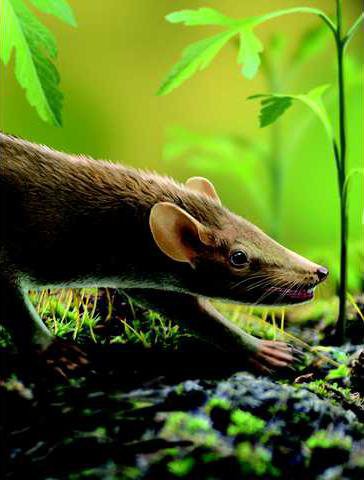CHICAGO A rodent-like specimen that walked on Earth 125 million years ago is the oldest mammal discovered yet.
The discovery is significant because the Spinolestes xenarthrosus fossil, which includes a record of intact guard hairs and hedge-hog like spines in addition to inner organs, is 60 million years older than the specimen that was previously considered to be the oldest known mammal, according to researchers from the University of Chicago.
Spinolestes is a spectacular find. It is stunning to see almost perfectly preserved skin and hair structures fossilized in microscopic detail in such an old fossil, study co-author Zhe-Xi Luo said in a statement. This Cretaceous furball displays the entire structural diversity of modern mammalian skin and hairs.
Evidence of internal organs in the spinolestes includes soft tissues from a liver, lung and diaphragm, according to the study published on Oct. 15 in Nature. The fossil also revealed an external ear lobe and plate-like structures made of keratin.
The early mammal was discovered in 2011 in Spains Las Hoyas Quarry. Researchers from Chicago worked with scientists from the Autonomous University of Madrid and University of Bonn to examine the specimen.
The specimen measured roughly 24 centimeters in length and is estimated to have weighed around 50 to 70 grams, about the size of a modern-day juvenile rat, a release from the University of Chicago reads. Its teeth and skeletal features indicate it was a ground-dweller that ate insects.
Looking at the fossil, researchers were able to determine that the mammal had a fungal skin infection called dermatophytosis. The condition is still prevalent among mammals in modern times.
Overall, the ancient specimen is remarkably modern, according to the study. Its compound follicles and small spines are similar to hedgehogs and African spiny mice. The spinolestes also had a functioning organ system.
With the complex structural features and variation identified in this fossil, we now have conclusive evidence that many fundamental mammalian characteristics were already well-established some 125 million years, in the age of dinosaurs, Luo said.
The discovery is significant because the Spinolestes xenarthrosus fossil, which includes a record of intact guard hairs and hedge-hog like spines in addition to inner organs, is 60 million years older than the specimen that was previously considered to be the oldest known mammal, according to researchers from the University of Chicago.
Spinolestes is a spectacular find. It is stunning to see almost perfectly preserved skin and hair structures fossilized in microscopic detail in such an old fossil, study co-author Zhe-Xi Luo said in a statement. This Cretaceous furball displays the entire structural diversity of modern mammalian skin and hairs.
Evidence of internal organs in the spinolestes includes soft tissues from a liver, lung and diaphragm, according to the study published on Oct. 15 in Nature. The fossil also revealed an external ear lobe and plate-like structures made of keratin.
The early mammal was discovered in 2011 in Spains Las Hoyas Quarry. Researchers from Chicago worked with scientists from the Autonomous University of Madrid and University of Bonn to examine the specimen.
The specimen measured roughly 24 centimeters in length and is estimated to have weighed around 50 to 70 grams, about the size of a modern-day juvenile rat, a release from the University of Chicago reads. Its teeth and skeletal features indicate it was a ground-dweller that ate insects.
Looking at the fossil, researchers were able to determine that the mammal had a fungal skin infection called dermatophytosis. The condition is still prevalent among mammals in modern times.
Overall, the ancient specimen is remarkably modern, according to the study. Its compound follicles and small spines are similar to hedgehogs and African spiny mice. The spinolestes also had a functioning organ system.
With the complex structural features and variation identified in this fossil, we now have conclusive evidence that many fundamental mammalian characteristics were already well-established some 125 million years, in the age of dinosaurs, Luo said.





